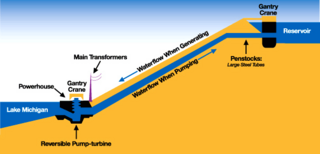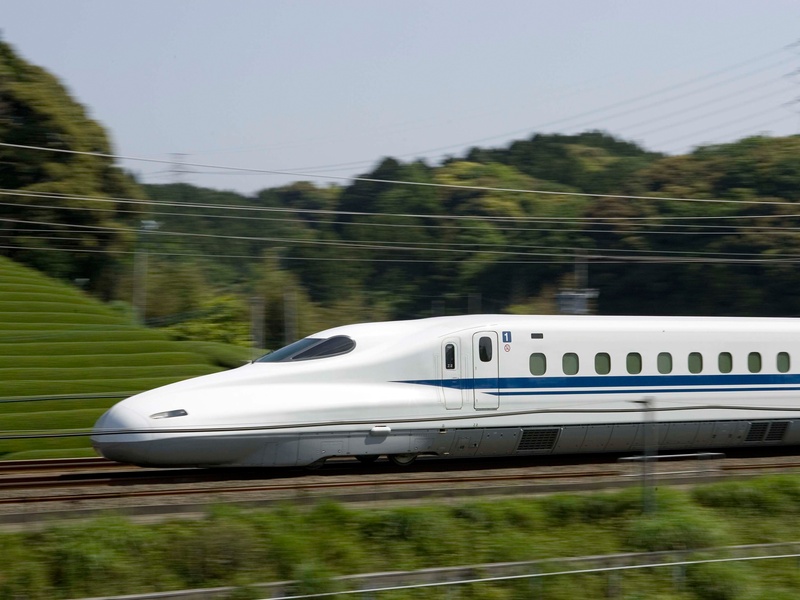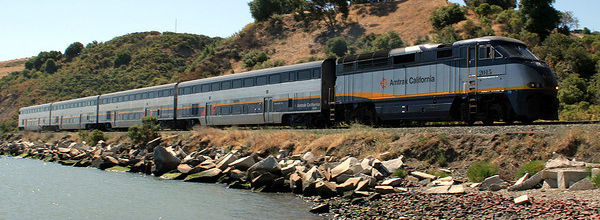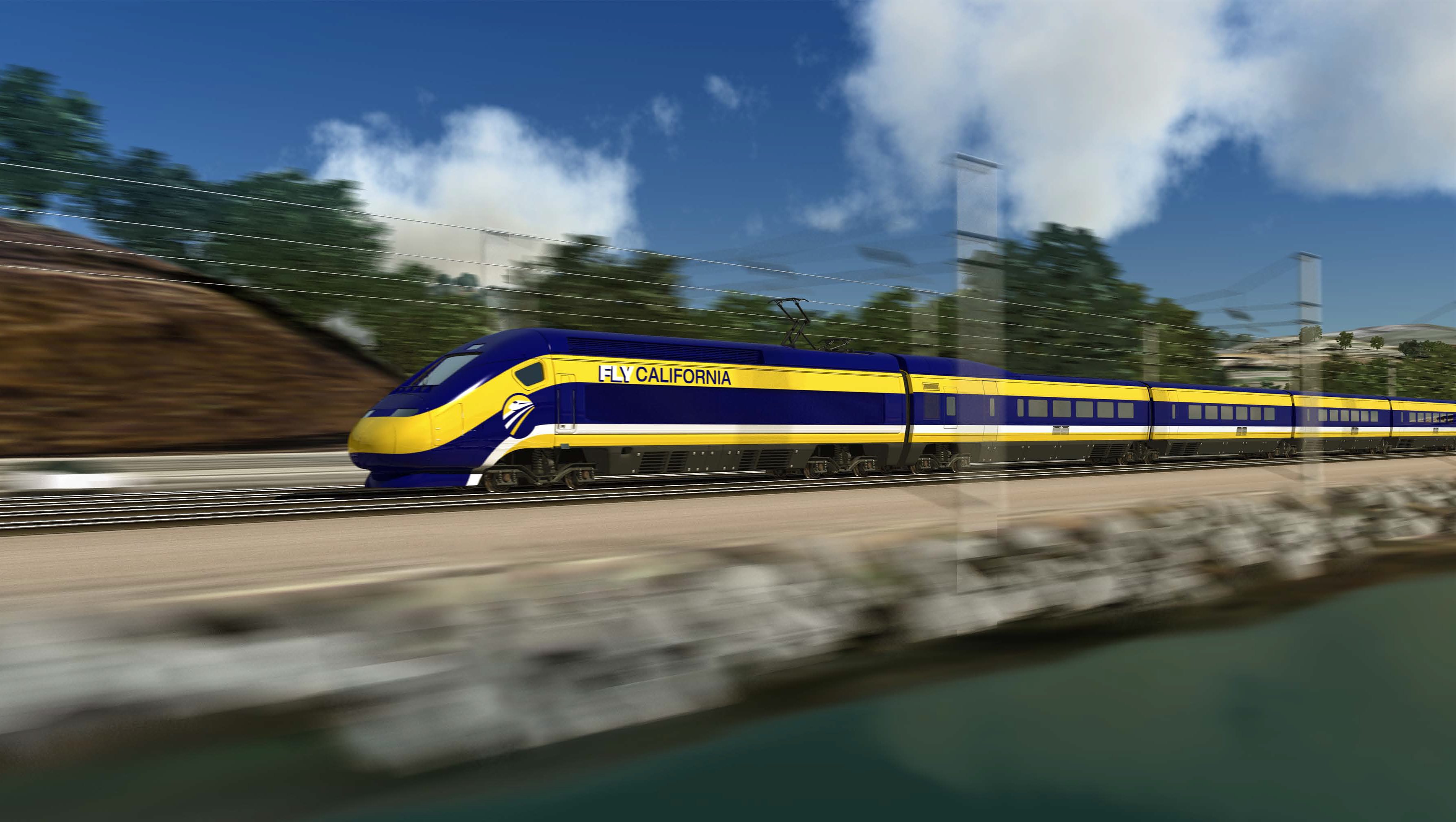Author's posts
Aug 11 2014
Sunday Train: The Era of Reverse Pumped Hydro
 In a sense, Sunday Train has been mentioning reverse pumped hydro before the Sunday Train actually existed. In 2007 at Daily Kos, in “Driving Ohio on Lake Erie” (reprinted in 2012 at Burning the Midnight Oil), reverse pumped hydro was mentioned as one technology for smoothing the variability of Lake Erie offshore wind. In 2008 on Docudharma, talking about what we could do if we pursued serious goals, as opposed to “predicting” what “they” are “likely to do”, I mentioned it again. I mention it again in The Myth of Baseload Power. And it features in the description of where Biocoal would fit into among dispatchable renewable energy in Unleashing the Political Power of Biocoal.
In a sense, Sunday Train has been mentioning reverse pumped hydro before the Sunday Train actually existed. In 2007 at Daily Kos, in “Driving Ohio on Lake Erie” (reprinted in 2012 at Burning the Midnight Oil), reverse pumped hydro was mentioned as one technology for smoothing the variability of Lake Erie offshore wind. In 2008 on Docudharma, talking about what we could do if we pursued serious goals, as opposed to “predicting” what “they” are “likely to do”, I mentioned it again. I mention it again in The Myth of Baseload Power. And it features in the description of where Biocoal would fit into among dispatchable renewable energy in Unleashing the Political Power of Biocoal.
But one thing that Sunday Train has not done is to give a closer look at the current state of play of reverse pumped hydro in the United State, what are the regulatory obstacles that stand in the way of greater development of reverse pumped hydro, and what can be done to sidestep or overcome those regulatory obstacles. Evidently, I must have been saving all of that for today, for placement below the fold.
Aug 04 2014
Sunday Train: Fast and Slow Transit Should be Friends
 As noted this week at The Overhead Wire:
As noted this week at The Overhead Wire:
There has been a lot of chatter recently on the issue of fast vs slow transit. This week is the perfect time for this discussion as two major United States transit projects of differing stripes opened up; the Metro Silver Line in Washington DC and the Tucson Streetcar.
On the one hand you have neoliberal Matthew Yglesias as the neoliberal “let us explain to you why There Are No Alternatives (TINA)” site Vox saying:
Without a dedicated lane, a streetcar can’t really run much faster than a bus under ideal conditions. And since unlike a bus, a streetcar can’t shift out of its lane to avoid an obstacle, in real-world circumstances it’s likely to move slower than a bus. There are some objectives related to real estate development and tourism that this kind of project can serve, but they’re nearly useless in terms of transportation.
And on the other hand you have the piece by Robert Steuteville at Better Cities and Towns, Place Mobility: Sometimes good transportation is slow, which observes:
The Portland streetcar has been a catalyst for $4 billion-plus investment and up to 10,000 housing units in the Pearl District and other neighborhoods close to downtown. All of these people and businesses have Place Mobility. They use the streetcar for quick trips and to make connections – it doesn’t matter that it moves very slowly because they don’t have to go far. But the new people and businesses in the Pearl and downtown are not the only beneficiaries. All of the existing businesses and residences also benefit from rising Place Mobility.
When a streetcar — or other catalyst — creates a compact, dynamic place, other kinds of mobility become possible. The densest concentrations of bike-share and car-share stations in Portland are located in the area served by the streetcar. That’s no coincidence. You can literally get anywhere without a car.
Of course, much of the “debate” falls into the logical fallacy of the false dichotomy, as if there is a choice between either having slow transit or having fast transit, when the reality is that we not only need both, but that improving either one improves the utility of the other.
Jul 28 2014
Sunday Train: HSR from Houston to Dallas one step closer to reality
 The Texas Department of Transport and Federal Railway Authority announced in June that they were beginning an Environmental Impact Study for the proposed private Texas Central Railways (TCR) High Speed Rail corridor between Houston and Dallas.
The Texas Department of Transport and Federal Railway Authority announced in June that they were beginning an Environmental Impact Study for the proposed private Texas Central Railways (TCR) High Speed Rail corridor between Houston and Dallas.
This is a private venture that is proposing to using the “Japan Rail Central” N700-I system, an internationalized version of the 186mph HSR train running between Tokyo and Osaka. TCR proposal is not only for the trains to be operated on farebox revenue, but for the corridor to be built with private funds. As the FRA announcement states:
TCR is a Texas-based company formed in 2009 to bring HSR to Texas as a private-sector venture. Working closely with Central Japan Railway Company (JRC), TCR is proposing the deployment of JRC’s N700-I Bullet System based on the world’s safest, most reliable, lowest emission, electric-powered, HSR systems, the Tokaido Shinkansen System. Developed and operated by JRC and the former Japan National Railways, the Tokaido Shinkansen has operated safely for almost 50 years and carries over 400,000 daily passengers. The most current generation Shinkansen train, the Series N700, runs at speeds up to 186 miles per hour.
Being a private venture, the EIS process will give us our first public look at corridor alternatives that TRC is considering, as well as the first opportunity for formal public comment.
Jul 21 2014
Sunday Train: What Future for America’s Deadly Cul-de-Sacs?
 The Great Recession of 2007-2009 triggered the Depression that we appear to be exiting this summer. And it was triggered by the collapse of the Great Turn of the Century Suburban Housing Bubble.
The Great Recession of 2007-2009 triggered the Depression that we appear to be exiting this summer. And it was triggered by the collapse of the Great Turn of the Century Suburban Housing Bubble.
In coming out of the recent Depression, one driver of residential property values, the Cul de Sac, seems to be in conflict with a new driver: walkability. In October 2013, the Realtor(R) Magazine Online, of the National Association of Realtors, wrote, in Neighborhoods: More Walkable, More Desirable that:
Neighborhoods that boast greater walkability tend to have higher resale values in both residential and commercial properties, finds a recent study published in Real Estate Economics. In fact, a 2009 report by CEOs for Cities found that just a one-point increase in a city’s walk score could potentially increase homes’ values by $700 to $3,000.
And Ken Harney, writing for NewHomeSource.com, observes in that:
The core concept – connecting people with where they want to work, play and own a home by creating attractive neighborhood environments that make maximum use of existing transit infrastructure – fits many post-recession households’ needs, regardless of age. Older owners of suburban homes are downsizing into townhouses and condo units close to or in the central city, often in locations near transit lines. Younger buyers, fed up with long commutes to work, want to move to places where they can jump onto mass transit and get off the road.
Many of these buyers also have an eye on economics. For example, Bill Locke, a federal contracts consultant in northern Virginia, said that although owning a LEED-certified townhome near a Metro transit stop “is a really big deal” for himself and his wife, he sees the unit they recently purchased in the Old Town Commons development in Alexandria, Va., as a long-term investment that will grow in value “because it makes so much more sense” than competing, traditional subdivisions farther out from the city.
So, what does this mean for the sustainable transport and for the future of the deadly American Suburban Cul de Sac? Let’s have a chat about it, below the fold.
Jul 14 2014
Sunday Train: Crutches vs Splints for the Highway Fund’s Broken Leg
From the Sunday Train
 There was a gleam of hope this week for state officials faced with the prospects of having to start delaying projects and lay off people working on maintenance and new construction funded from the Federal Highway Fund: Bloomberg:
There was a gleam of hope this week for state officials faced with the prospects of having to start delaying projects and lay off people working on maintenance and new construction funded from the Federal Highway Fund: Bloomberg:
Lawmakers’ fight over how to fund roads and transit probably will end with legislation from the Republican-led House sent to President Barack Obama, leadership aides in both parties said.
House and Senate leaders have been collaborating on a strategy for preventing the Highway Trust Fund from running dry at the height of the summer road-construction season. While bills approved July 10 by committees in both chambers are similar, the Democratic-led Senate’s version contains tax proposals seen as obstacles in the House.
But this is akin to lending someone with a broken leg crutches and hoping that it will heal on its own. For some fractures, that might work, but most would require a splint at least, and for serious fractures, you need to set the leg and put it in a cast of some sort.
In the case at hand, the long term broken funding model that lays behind the Highway Funding crisis is something that requires something better than a temporary loan of crutches.
Jul 07 2014
Sunday Train: Thinking About a Bakersfield Express Bypass
 Since Gov. Brown saved the California HSR project for the second time (the first time was in 2012), I’ve had a look at the general issue of funding HSR with Cap and Trade, and looked at some possibilities for complementary conventional intercity rail in the Bay Area and the San Joaquin Valley north of Fresno … so I thought I might start moving south of Fresno.
Since Gov. Brown saved the California HSR project for the second time (the first time was in 2012), I’ve had a look at the general issue of funding HSR with Cap and Trade, and looked at some possibilities for complementary conventional intercity rail in the Bay Area and the San Joaquin Valley north of Fresno … so I thought I might start moving south of Fresno.
And today I am going to focus on Bakersfield and a starting sketch of an idea for what I call the “Bakersfield Express Bypass.” I do want to stress upfront, so its not lost in the details of talking about the Bypass, that I am not talking about “skipping Bakersfield”, but rather talking about how best to plan for those LA to SF trains that will eventually be Express trains, Anaheim, LA, Burbank, Fresno, San Jose, San Francisco Transbay.
Jun 30 2014
Sunday Train: Is There A Beam of Hope for Texas Rooftop Solar?
 A few weeks back, I teased that I wanted to take a bit of a look at Texas Rooftop Solar in the Sunday Train (which is, recall, focused on Sustainable Transport & Energy, and so both not just about trains, and also not in favor of trains when the trains are advancing climate suicide) … and then the California budget passed and I went on a two week binge on California HSR.
A few weeks back, I teased that I wanted to take a bit of a look at Texas Rooftop Solar in the Sunday Train (which is, recall, focused on Sustainable Transport & Energy, and so both not just about trains, and also not in favor of trains when the trains are advancing climate suicide) … and then the California budget passed and I went on a two week binge on California HSR.
But now its time to take that glance over at Texas Rooftop Solar. After all, you’d think that Texas would be an ideal state for rooftop solar, and for years we’ve been seeing articles about how Lone Star State Rooftop Solar would hit big “real soon now”. For instance, this, from 13 Jan, 2013: Solar Power Could See Explosive Growth in Texas over Coming Decades:
Still, solar is just a tiny sliver-less than 1 percent-of Texas’ electricity mix, which is dominated by coal (34 percent) and natural gas (45 percent). Wind, with a 9 percent share, is a giant compared to solar.
Yet, the economics are becoming increasingly favorable for solar to take off in a big way. The question is probably when, not if. And a recent analysis by ERCOT-the industry-funded, technocratic grid operator-has some very rosy projections for the future of the solar industry in Texas. (And some very sour news for nuclear, coal and maybe even natural gas.)
The analysis, first flagged by Colin Meehan of Environmental Defense Fund of Texas, looks at potential transmission needs in the next two decades. But, as Meehan wrote, ERCOT “found that if you use updated wind and solar power characteristics like cost and actual output to reflect real world conditions… wind and solar are more competitive than natural gas over the next 20 years.”
But if the future doesn’t start arriving, it might never get here, brought crashing down by the catastrophic impact of runaway climate crisis. So, what are the prospects that rooftop solar might really start hitting its stride really soon now?
Jun 23 2014
Sunday Train: Improving the Conventional Amtrak California services
 I’m a terrible tease ~ that is, in the sense of “not terribly good at it” ~ since I teased more on Texas Rooftop Solar, both two weeks ago when I talked about Texas Utility Scale Solar, and last week when I talked about California assuring the funding to start building it HSR, using Cap and Trade funding. However, here I am, talking about California trains again … because while wearing my Sunday Train editorial hat, I wanted to force the author to follow through on the tease, wearing my Sunday Train author hat, I refused, because I wanted to write about both plans and opportunities for existing “conventional” intercity passenger rail in California.
I’m a terrible tease ~ that is, in the sense of “not terribly good at it” ~ since I teased more on Texas Rooftop Solar, both two weeks ago when I talked about Texas Utility Scale Solar, and last week when I talked about California assuring the funding to start building it HSR, using Cap and Trade funding. However, here I am, talking about California trains again … because while wearing my Sunday Train editorial hat, I wanted to force the author to follow through on the tease, wearing my Sunday Train author hat, I refused, because I wanted to write about both plans and opportunities for existing “conventional” intercity passenger rail in California.
That is, in general I am talking about:
- The San Joaquin, from Bakersfield through Fresno with on leg running to Oakland and another leg running to Sacramento;
- The Capitol Corridor from San Jose / Oakland through to Sacramento;
- The Caltrain from San Jose though “Silicon Valley” to downtown San Francisco;
- The ACE from Stockton via Tracy and Livermore through to San Jose; and
- The Surfliner, from Santa Barbara through LA Union Station and Anaheim to San Diego.
For a Buckeye who has experienced a not too dissimilar variety of intercity rail services when living and teaching in New South Wales, Australia, a collection of intercity services to make me green with envy, given our two nightly trains between midnight and 6am in this part of Ohio three late night Cardinal services per week in Cincinnati, and ZERO FREAKING SERVICES PER DAY, PER WEEK OR PER FREAKING MONTH FOR COLUMBUS OR DAYTON, THANK YOU VERY MUCH HOPEFULLY ONE-TERM GOVERNOR. KASICH … {deep breath} … and here I’m going to talk about making those conventional California services better … below the fold.
Jun 16 2014
Sunday Train: California HSR Receives Cap & Trade Funding in Budget Deal
 Sunday Train has covered the California HSR project on a number of occasions in the past. However, there was no special attention given to what was widely covered at the time as the “end of California HSR”, when a judge ruled that the proposed Business Plan did not meet the terms of the Prop1A(2008) which governed the sale of much of the $9m in state bond authority which had passed in 2008. The Sacramento Bee covered the issue at the time, including the appeal of the ruling to the Supreme Court.
Sunday Train has covered the California HSR project on a number of occasions in the past. However, there was no special attention given to what was widely covered at the time as the “end of California HSR”, when a judge ruled that the proposed Business Plan did not meet the terms of the Prop1A(2008) which governed the sale of much of the $9m in state bond authority which had passed in 2008. The Sacramento Bee covered the issue at the time, including the appeal of the ruling to the Supreme Court.
And the reason the Sunday Train did not cover that court judgement is IANDL (I Aint No Dang Lawyer), so I was waiting to see what actually happened with respect to funding for the project. And now it appears to me that funding for the original segment from north of Fresno to the outskirts of Bakersfield has been secured, with the news that part of the Budget deal has secured Cap and Trade funding for the HSR project.
More on what this means, below the fold.
Jun 09 2014
Sunday Train: The Solar Fight, Is Going Right, Deep in the Heart of Texas …
 Well, what do you know? I look around, and see a story saying Solar power gains momentum after long struggle in Texas. And not in “Grist” or “Solar Energy News!” or any such … but in the Dallas Morning News Business section from Wed, 4 June 2014.
Well, what do you know? I look around, and see a story saying Solar power gains momentum after long struggle in Texas. And not in “Grist” or “Solar Energy News!” or any such … but in the Dallas Morning News Business section from Wed, 4 June 2014.
According to the story,
Recurrent announced plans last month to build a 150-megawatt solar farm in West Texas after signing a 20-year power purchase deal with Austin Energy. That comes just months after First Solar, one of the world’s largest solar companies, began construction on a 22-megawatt farm near Fort Stockton with plans of eventually expanding to 150 megawatts.
…
And an even more dramatic acceleration could be ahead. Solar developers have been flooding the state’s grid operators with applications for more solar farms, close to 2,000 megawatts worth, said Warren Lasher, director of system planning for the Electric Reliability Council of Texas. “It’s hard to say how much will actually get built,” he said. “It’s been this way for more than a year. But it’s a significant increase from before.”
Join me for utility scale solar PV, utility scale solar thermal, onshore wind, offshore wind, and grid integration … below the fold.

Recent Comments